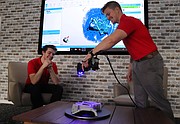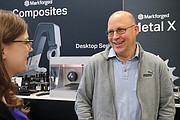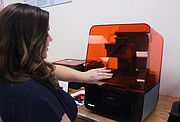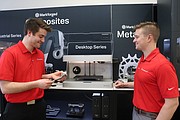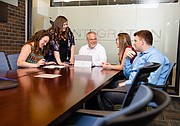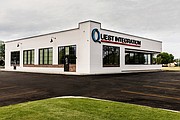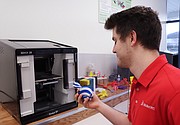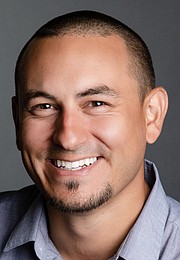QUEST INTEGRATION
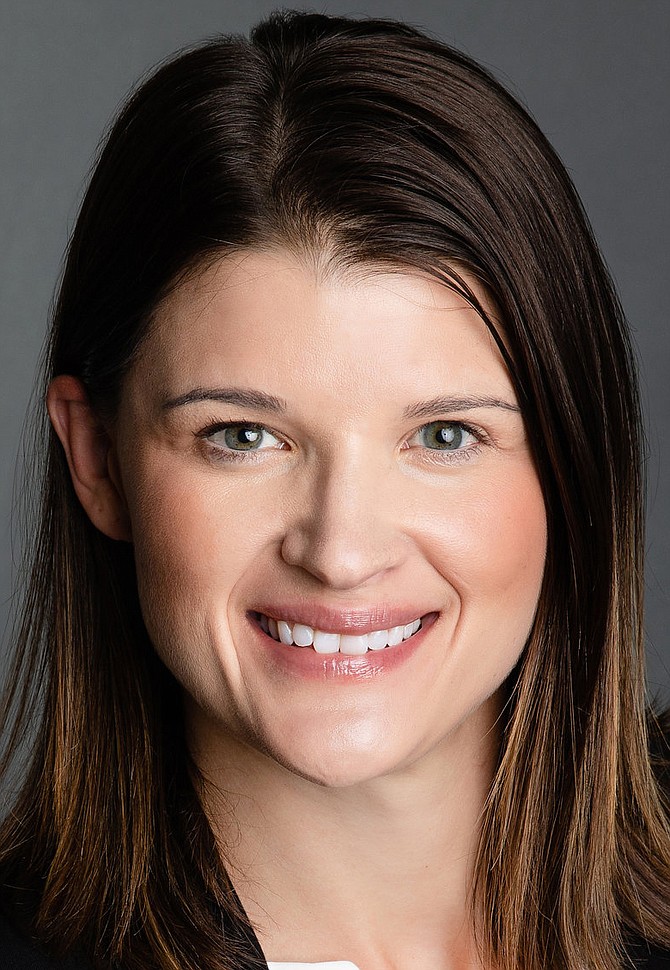
Hillyard
Manufacturing has changed — evolving over the decades from smokestacks to 3D printers that create tiny components that make up devices used all over the world.
For 22 years, local engineering and manufacturing solution provider Quest Integration has been there to watch these changes happen — and to evolve along with the industry.
“I think a lot of people don’t have an understanding of truly how robust our manufacturing area is and what technology is available,” said Chantel Wilkes, Quest Marketing & Systems Supervisor.
Based in Post Falls, Quest Integration was founded in 1998. Back then, Quest sold SOLIDWORKS products, including computer-aided design programs. But the region needed more than a software reseller, so Quest expanded.
The company has four locations — Post Falls, Seattle, Richland, Wash., and Bozeman, Mont. In addition to products like 3D printers and scanners, software, hardware and other services, Quest offers on-site training, events and support that can’t be found elsewhere in the area.
The fourth industrial revolution is happening now, said Quest President David Minerath — Industry 4.0. The most exciting opportunity that’s come with it is the convergence of 3D printing, iterative and AI empowered engineering and cloud-based assets allowing for a globally integrated, flexible workforce.
“Getting regional educators, businesses and the next generation of our workforce competent in leveraging these concepts to be successful continues to be our mission,” Minerath said.
To that end, Quest offers educational opportunities to the community, inviting educators into their commercial events and integrating them into commercial training.
“Our number one goal is to educate the community on manufacturing, where technology is at and where it’s headed,” said Adam Benson, Engineering Manager. He’s been with the company for eight years.
Benson said Quest strives to be more than just a software or hardware provider. The company makes a point of building relationships with their customers in order to better understand their business needs.
“That’s why we have strategically positioned our team throughout the Pacific Northwest — so we can make sure we’re available to our customers,” said Mallory Hillyard, Operations Manager.
It’s the needs of those customers that drives Quest to innovate. In fact, Quest began to explore additive manufacturing — or 3D printing — because their customers were interested in the technologies.
“Our future is defined by our customers,” Benson said.
The company’s future is also defined by its employees, and employee growth is a key part of Quest’s philosophy.
Take it from Hillyard, who started working at Quest right out of college. She was hired to be an administrative assistant. Now, 13 years later, she’s worked her way up to Operations Manager.
“Those opportunities were available to me,” she said. “That was really why I stayed here and why I chose this as my career path.”
At Quest, the team believes that a career should be more than a bulleted list of duties.
“What do you like doing?” Hillyard said. “What do you want to do? Let’s see if we can figure out a job description that matches that.”
It’s one of the advantages of being a small business: Quest can move people around based on their interests and skill sets, until they find the perfect fit.
Hillyard noted that Quest is hiring.
Wilkes added that Quest strives to be more than just a software or hardware provider. The team works hard to provide a quality of service that can’t be matched.
“You don’t have to go to a big supplier in Seattle or Boston,” she said. “It’s still possible to have local support that’s going to understand you and understand your business. You can’t beat that level of understanding.”
Info: www.qintegration.com


